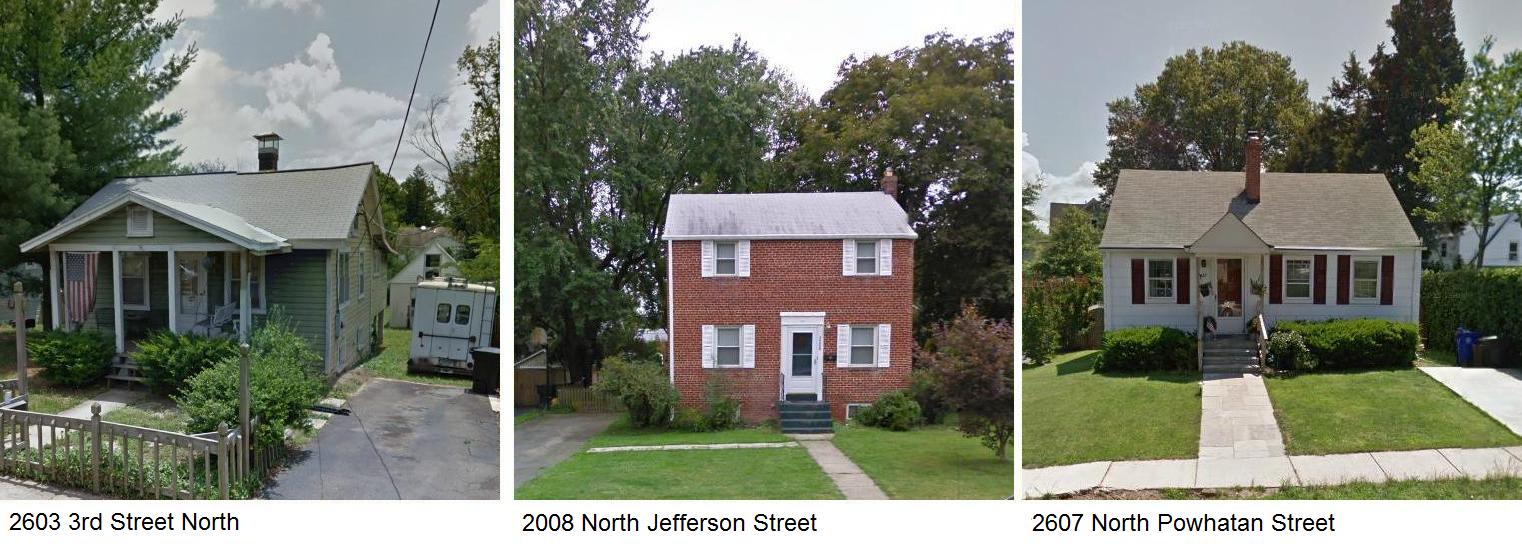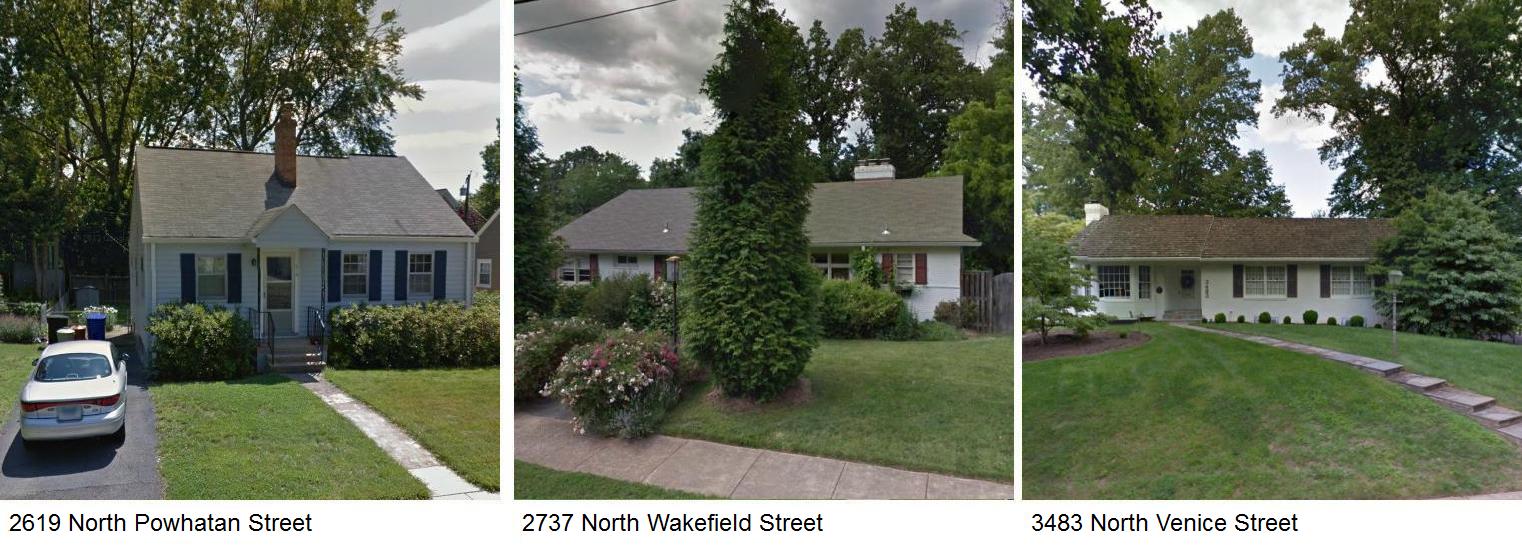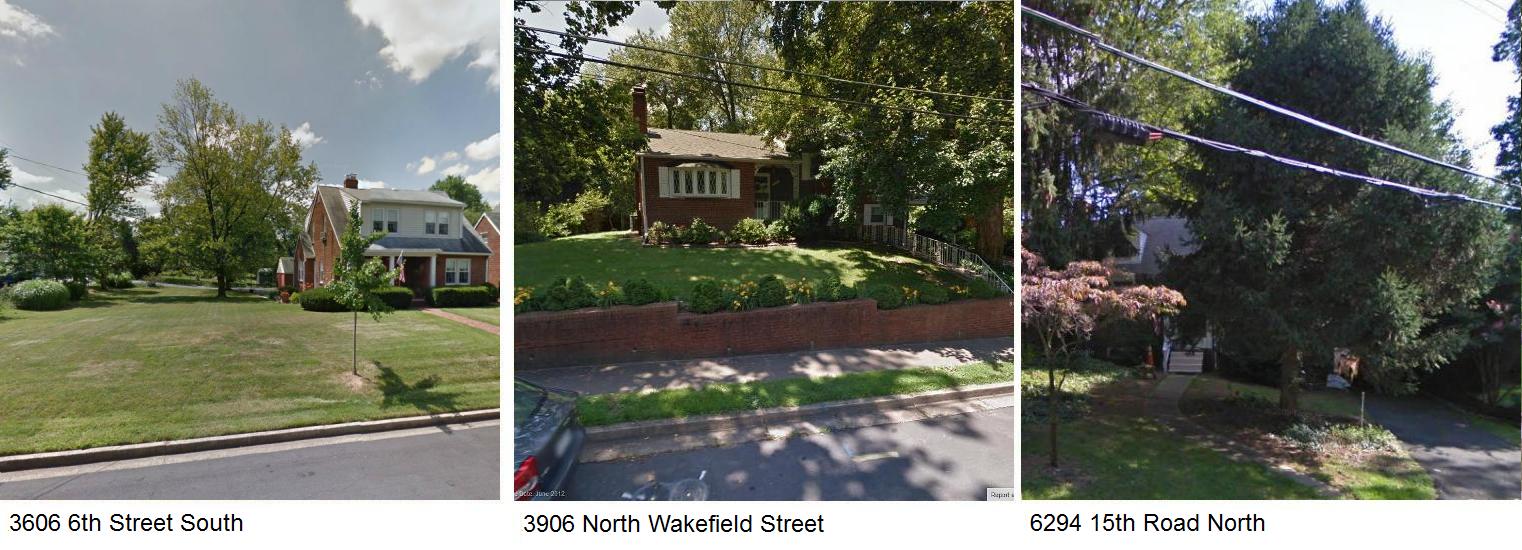LOST: January 2014 Snapshots
In January 2014 a total of 14 demolition permits were applied for in Arlington County (see photos below). Eleven of them were for single family homes, one was for a commercial building, and the other two were demolition of detached garages. One of the houses, 2608 3rd Street North, is located in the Lyon Park Historic District. Several of the homes are located in neighborhoods that could qualify for historic designation under National Register criteria.
In review of the Arlington County tax records, eight of the eleven houses are owned by builders and are speculative redevelopments, and two are being redeveloped by individuals who bought the property within the last year. The one commercial building is being redeveloped as part of a major site redevelopment in the Rosslyn area.
The looming demolition of these houses and buildings represents an incredible loss of history, architecture, time, energy, and materials. Many had the potential for renovation and additions, or, at a bare minimum, reclamation/reuse of building materials. These buildings are often replaced with new construction that is out of scale and proportion to the community. Preservation Arlington urges citizens to adopt Local Historic District designations for their communities, with standards for design, height, and placement that could be customized to reflect community needs while still allowing reinvestment to occur.
Similarly, if you are a property owner and are contemplating a change to your property, Preservation Arlington encourages you to work with your architect or builder to consider how some or all of your house or building could be incorporated into a renovation, or the materials reused.




6 thoughts on “LOST: January 2014 Snapshots”
I see 3, almost identical, Cape Cods. Why is a tear down detrimental?
Your group is moronic. Just because something is old doesn’t make it special or worth keeping (i.e. The Blue Goose). All of the houses pictured above look like peices of crap. If an owner (be it an individual or builder) want to spend their money to buy, demolish and rebuild, who are you, I, or anyone else to tell them not to as long as they abide by the County’s zoning regulations.
Gotta wonder if anyone in Preservation Arlington lives in one a crappy little shoebox like these houses.
My house was built in the 1920’s and was 950 sf. Dug out basement that got wet often. Back porch pulling away from structure.
Prime tear down.
My block is a row of five craftsman-style homes all of similar scale and design. It’s really a nice little block.
Instead of bulldozing my house, I stabilized the foundation, put on a second floor, and an addition on the back.
My house went from smallest to largest on the block. Someone recently told me it fits in so nicely they don’t even remember the old house.
Did it cost more? Probably a bit.
Did I tear any trees down? No.
Did I send several dump trucks of debris to the landfill? No.
Is it perfect? No.
Does it fit the scale and character of the street? Absolutely.
Your comments are as simplistic (I almost said “moronic”) as you think preservationists’ are. The fact that something is new doesn’t make it automatically better or more attractive. Part of the question is whether one values the established character and scale of our neighborhoods and the general compatibility and congeniality of homes along a block or street. If that isn’t important to you, you’re more likely to scoff at concerns about tearing down older, more modest but still very serviceable homes and replacing them with new structures that max out the zoning envelopes. (Just please don’t call the new monsters “craftsman” because one hallmark of that style is restraint.)
Although “all of the houses pictured above look like peices of crap”, you can be sure that the townhouses and McMansions that will replace them will look much worse.
The mature trees and open space will be gone. The new buildings will be higher, obstructing distant views from the neighborhoods. The new and larger buildings will use more energy and other resources and will create more traffic than will the older smaller buildings.
There are good reasons to resist development, regardless of whether your might like to preserve old buildings. Development inevitably degrades the natural environment, whether you like it or not.
Creation of local historic districts to protect neighborhoods from overdevelopment is not easy. Many neighborhood residents do not want legal restrictions placed on their properties that will limit their actions. While they may be able to obtain preservation tax credits to help preserve their neighborhoods, some property owners consider these benefits to be worth less than the losing the opportunity to profitably sell their properties to rapacious developers.
Arlington has only a few neighborhood historic districts. If many people have attitudes like those that others have expressed above, the Count will never have anything similar to old town Alexandria and Georgetown, whose property values escalate because they are historic.